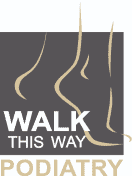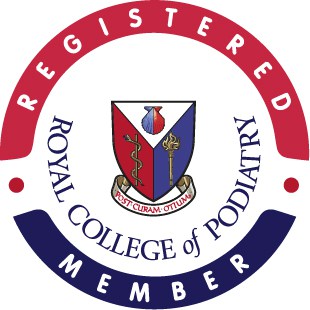One of the most common foot concerns children face is Verrucae and hand warts. They are easily spread and can go unnoticed, particularly on the foot. Verruca is a human papillomavirus (HPV) and can be particularly troublesome for active children. Active lifestyles and exposure to public spaces make children susceptible to verrucae. Often contracted through direct skin-to-skin contact or by walking barefoot in moist environments like swimming pool areas. Children’s immune systems are still developing, which can lead to prolonged struggles with verruca’s or hand warts.
Symptoms of Verrucae and Hand Warts:
Verrucae, also known as plantar warts, usually appear on the soles of the feet. They often present as small, rough lesions with black dots in the centre, which are tiny blood vessels that can resemble small cauliflower head. They can have overlying hard skin with a yellowish appearance and some clients feel pain when squeezing the outside margins of the lesion or when weight bearing.
Hand warts, on the other hand, appear on the hands and fingers and can vary in size and appearance. Both types of warts can be unsightly and may cause embarrassment and discomfort, especially when walking or using the hands.
Effects of Verrucae and Hand Warts:
While verrucae and hand warts are generally harmless, they can have several effects on children if left untreated. Firstly, they may spread to other areas of the body or to other people through direct contact. They should be treated as soon as possible to prevent infecting others or allowing the virus to manifest and become worse prolonging recovery.
Additionally, verruca’s and hand warts can cause huge anxiety, especially if they are visible on the hands and feet. Children may feel embarrassed, have low self esteem or become self-conscious about their warts, stopping them from living a healthy happy life.
The Importance of Treatment:
Given the potential effects of verrucas and hand warts, we recommend seeking professional medical advice. While some warts may resolve at their own pace over time, treatment can help alleviate discomfort, prevent spreading, and speed up the healing process. We understand the emotion involved with verrucae and hand warts, so we allow plenty of time to explain the recommended tailored treatment plan, and of course answer any questions you may have.
Check Your Child’s Feet:
Parents should also encourage good hygiene practices to reduce the risk of spreading warts to others. This includes washing hands regularly, avoiding sharing towels or personal items, and wearing protective footwear in communal areas such as swimming pools or changing rooms.
As verruca and hand warts can be painless at times, children don’t realise they are suffering so we recommend checking your child’s feet and hands. Investigate between the toes, soles of the feet and between the fingers for any changes, lumps.
SWIFT Treatment for Verrucae and Hand Warts:
This treatment involves the controlled delivery of precise microwave energy to the affected area. This stimulates the body’s immune response, prompting it to recognise and combat the virus causing the verruca. Unlike traditional methods like cryotherapy or acid applications, SWIFT treatment avoids open wounds, reducing infection risk and minimizing discomfort.
Benefits:
Minimally Invasive Approach: SWIFT treatment focuses directly on the affected tissue, preserving healthy skin. This targeted approach provides precise application and minimal discomfort.
Swift Procedures: The quick procedure is well-suited for children with shorter attention spans. Recommended 3-4 week intervals will fit into busy schedules and those after school clubs.
Comfort Management: While some mild discomfort might occur during the procedure, it’s generally well-tolerated by children. Our team of experts coach children through any discomfort and adapt to their needs without affecting treatment efficacy.
High Efficacy: Boasting an impressive 86% success rate, SWIFT treatment instils confidence in its results.
Minimal Aftercare: Unlike other methods requiring dressings and ongoing care, SWIFT treatment typically demands minimal post-procedure attention. If there is any sensitivity this is short lived.
Parental Choice: While recommended for children over 5 years old, the ultimate decision rests with parents who can choose the best treatment for their child’s verruca. Our personalised approach to each consultation supports both parent and child to make the right decision and gain your trust.
How many appointments are needed:
How one responds to treatment will vary from child to child, therefore after each treatment your podiatrist will review the results 4 weeks later. Typically SWIFT treatment is performed with up to 4 sessions.
By seeking appropriate treatment and promoting good hygiene practices, parents can help alleviate symptoms, prevent spreading, and support their child’s overall well-being.
What to do now?
If you suspect your child has verrucae or hand warts, then we recommend booking online, alternatively please call us today to see how we can help.








